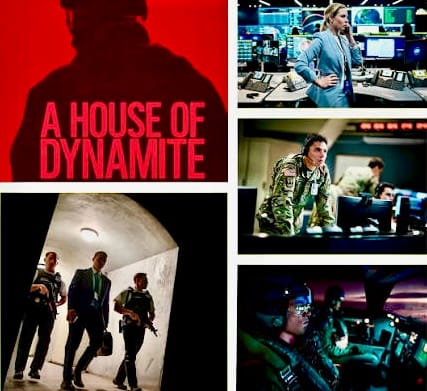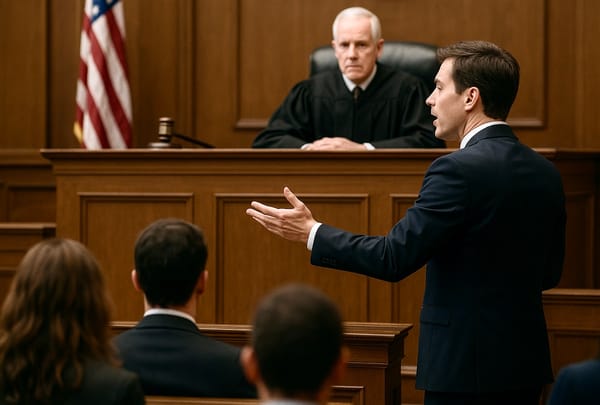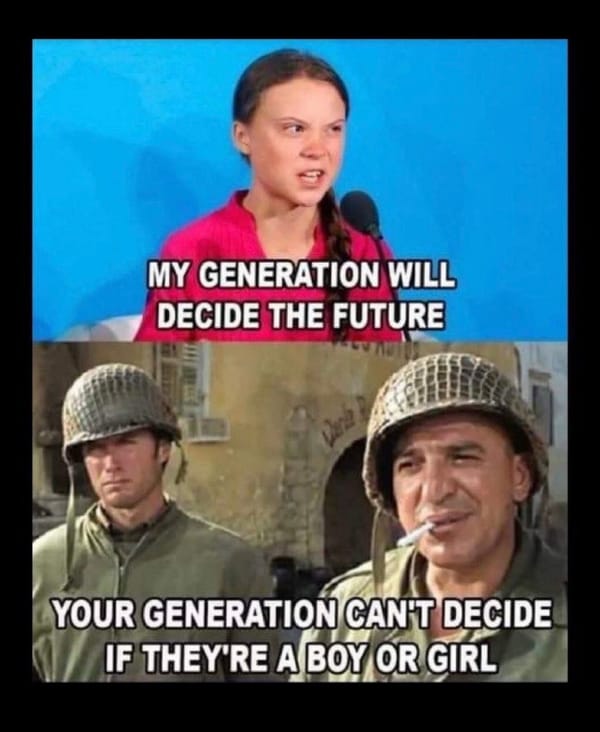Director Bigelow flinched at taking the final step
By genre, this is ticking-bomb stuff. In 18 minutes something catastrophic will happen, can we dodge the bullet, so to speak?

Kathryn Bigelow’s apocalyptic drama, “A House of Dynamite,” might have been better if the Oscar-winning director had waited for writer Noah Oppenheim to write a finale.
Just kidding. Sort of. The movie, now on Netflix, has a question mark at the end.
Some people like cliff hangers. I do not.
Yes, I know the unfinished ending opens the door to endless discussions by film buffs at UCLA and ethics nerds at NYU, but those conversations could take place with a definitive ending, debating whether what happened was right, as opposed to what happened?
The end-of-the-world movie is presented in three segments, from the points of view of three different entities — the White House Situation Room, Strategic Command, and the president of the United States, played by a Black Brit, Idris Elba. (Taking jobs Americans won’t do?)
Anyway, the film tracks the 18 minutes from the time a missile is launched at the United States, to a few seconds before impact on Chicago. (Go Bears!)
Aside from the lack of an ending, my other gripe is the film’s presumption that none of the United States’ technological and intelligence assets are able to detect where the missile was launched.
Sorry, but that is just wrong. By a mile.
In reality, thanks to 9,000 high-powered microprocessor-capable satellites, a ballistic missile would be detected within seconds of ignition.
In “A House of Dynamite," precious minutes are lost as civilians, military and intelligence try to figure out a) who is shooting at us, and b) is it only a test of our defenses (which fail to shoot it down)?
By genre, this is ticking-bomb stuff. In 18 minutes something catastrophic will happen, can we dodge the bullet, so to speak?
Bigelow specializes in dark, gritty, military-industrial plotlines, such as “The Hurt Locker,” for which she was Oscared, and “Zero Dark Thirty,” and I have little doubt about the authenticity of the dialogue we hear in the situation room and strategic command.
But I can’t shake loose of the glaring error of the rogue missile from somewhere in Asia or the Pacific.
We would know precisely its origin.
Why am I so sure?
Because of a book I read last year, which, while fiction, shares a similar premise with the movie. That book is Annie Jacobsen’s “Nuclear War: A Scenario.” I wrote a column about it.
Jacobsen is a recognized authority on the military and nuclear weapons, and In her account, we know immediately that North Korea has fired a Hwasong-17 ICBM at the U.S., and it will strike within 20 minutes.
Like the movie, the book gives a minute-by-minute — actually, second-by-second — accounting of where the missile is, and how Americans are responding.
Why just one? Was it an accident? How should the U.S. respond?
Jacobsen’s fear is that any retaliation will lead to further retaliation, and inevitably to the end of the world.
“House” ends with the president reviewing his choices.
In “Nuclear War,” the nuclear missile explodes and Jacobsen weaves a terrifying narrative of what America will be like after such an explosion.
She dares go where the movie would not, naming the Pentagon as the target.
A 1-megaton thermonuclear weapon would generate 180-million-degree heat behind a flash so bright, it can’t be imagined, Jacobsen writes. The heat creates a fireball expanding at millions of miles per hour, and the 27,000 humans in the Pentagon would perish instantly.
Office buildings and other structures become dust. More than 1 million people are dead or dying within two minutes of detonation, Jacobsen writes. Gas lines explode, one after another, acting like flamethrowers, spewing deadly streams of fire. Tanks containing flammable materials burst open. Open gaps in floors and roofs behave like chimneys. Carbon dioxide from the firestorms settle into subway tunnels, asphyxiating riders in their seats. Asphalt streets turn to liquid, trapping hundreds in molten quicksand. Tens of thousands of people have ruptured lungs. Crows, sparrows, and pigeons flying overhead catch fire and drop from the sky. There is no electricity, no phone service, no 911.
No cars, no TV, no internet, no emergency services. Everyone is on his own.
OK — I realize that is a different movie than Bigelow wanted to make.
Maybe she has a sequel in mind.
“House” had the feel of a documentary, and it is well written, and well acted. I don't want to give away any more of the minor plotlines.
I enjoyed the movie, I really did. But I would have enjoyed it so much more had Bigelow shown Chicago being vaporized, and for the president to make the ultimate decision — yay or nay — about retaliation.



